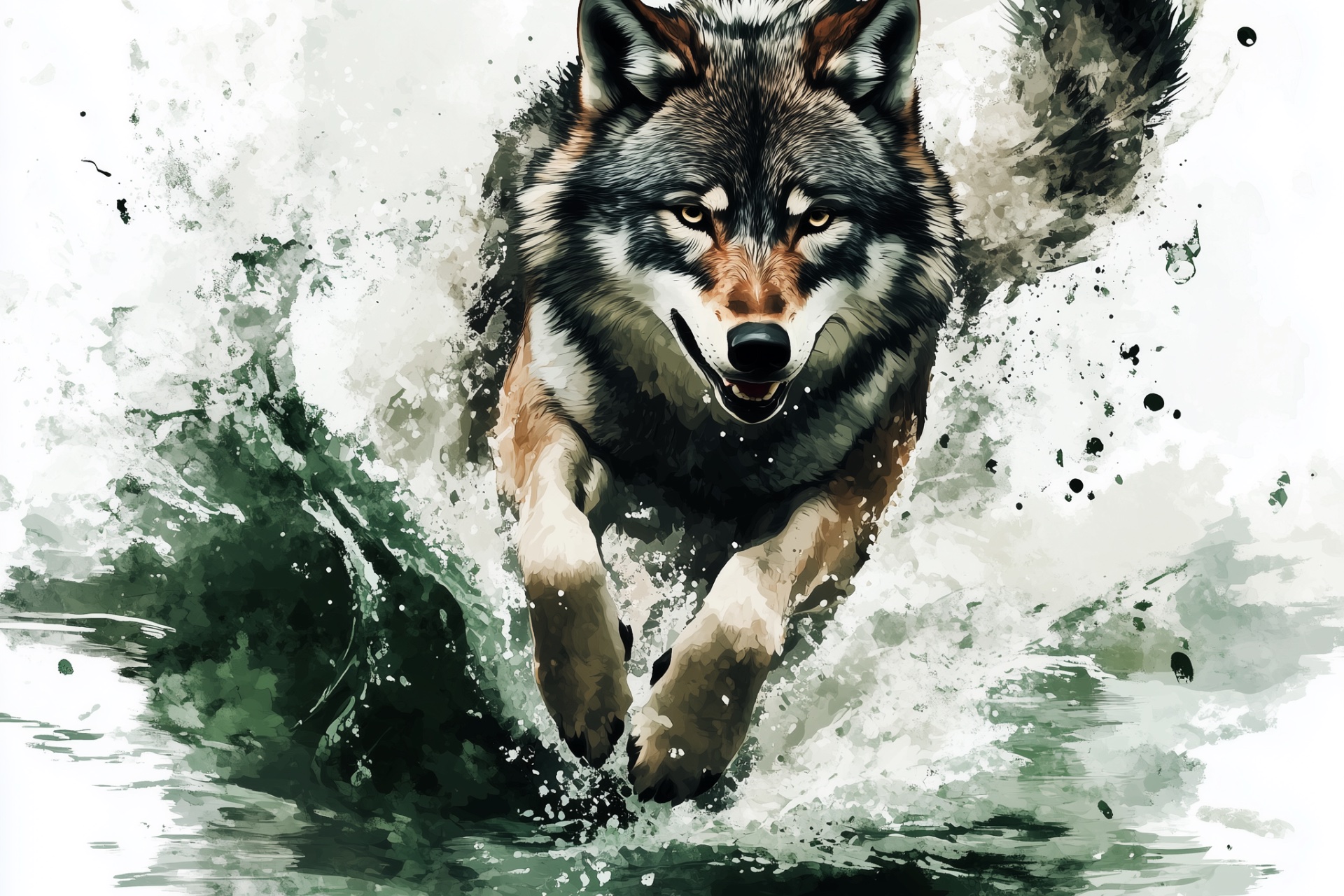The Wolf in Human Culture
The Wolf in Human Culture: A Symbol of Strength, Loyalty, and Freedom
Throughout history, the wolf has held a unique and powerful place in human culture. Far from the fearsome, bloodthirsty creature that some might envision, the wolf has been celebrated as a symbol of strength, loyalty, courage, and freedom. Its presence in art, literature, and even real-life events is woven deeply into the fabric of human history, showing us that the wolf has always been a beloved and revered animal. In this blog, we’ll explore the positive, inspiring stories of the wolf in human culture, touching on places, events, and stories where the wolf’s name and image have been embraced with respect and admiration.
The Wolf as a Symbol of Strength and Loyalty
From ancient myths to modern-day sports teams, the wolf has consistently symbolized both individual strength and the power of community. One of the most famous examples is the Roman legend of Romulus and Remus, twin brothers who were said to be raised by a she-wolf in a cave known as the Lupercal. According to this story, the wolf not only saved the lives of the brothers but also nurtured them until they grew strong enough to later found the city of Rome. The wolf in this myth is a symbol of care, survival, and the unyielding strength that comes from loyalty and protection — traits that are still revered today.
Wolves in Native American Culture
In many Native American cultures, the wolf is viewed as a spirit animal or a totem of strength, wisdom, and guardianship. The Wolf Clan is a prominent group within the Iroquois Confederacy, and the wolf itself is seen as a protector and guide. According to tradition, the wolf is a teacher of survival, patience, and family loyalty, lessons that are passed down through generations.
Many tribes view the wolf as a revered figure, even associating it with the moon. In particular, the Navajo people hold the wolf in high esteem, seeing it as a protector of the people and a figure of great spiritual significance. Stories of wolves running alongside warriors in the wilds of North America tell of the deep connection between the animals and humans, where the wolf’s resilience and dedication mirror the qualities needed to survive in the harshest environments.
The Wolf in Modern-Day Events and Organizations
In contemporary culture, the wolf’s symbolism of strength and unity continues to thrive in various forms. The Minnesota Timberwolves, an NBA team, proudly carries the wolf’s image, encapsulating the qualities of teamwork, strength, and agility. Fans of the Timberwolves embrace this powerful symbol, seeing themselves as part of a collective effort, much like a wolf pack working together towards a common goal. The wolf represents unity, but it also highlights the importance of individuality, as each player brings their own skills to the table.
Similarly, the Vancouver Wolfpack is a professional rugby league team based in Vancouver, Canada, whose name reflects a commitment to resilience, determination, and teamwork. By adopting the wolf as their symbol, the team expresses the values of perseverance and collective strength, striving for success both on and off the field.
The Wolf in Literature and Art
In literature, the wolf has inspired countless works, often representing the balance between wild freedom and the disciplined strength of a pack. One of the most beloved novels about wolves is Jack London’s „The Call of the Wild”, which explores the journey of Buck, a domesticated dog who finds his wild roots in the harsh Yukon wilderness. Throughout the novel, the wolf serves as a metaphor for the untamed spirit that exists within all living beings, a reminder that strength comes from embracing both independence and the ties that bind us to one another.
The wolf’s symbolic presence can also be seen in art, where it has often been depicted as a fierce yet noble creature. Robert Bateman, one of the world’s most famous wildlife artists, has produced stunning portrayals of wolves, capturing both their power and grace. These artistic representations emphasize the wolf’s natural beauty, shedding light on the deep respect humans have for the animal, both as a symbol and as a creature of the wild.
Wolf-Themed Locations and Events
Across the globe, many locations carry the wolf’s name, reminding us of the deep connection between the creature and human society. For example, Wolf Point, a town in Montana, USA, is named after the presence of wolves in the area, celebrating the animal’s historical significance to the local Native American tribes. The town’s name serves as a tribute to the wolf’s role in the natural ecosystem and its cultural importance.
Another interesting example is Wolf Creek, a popular outdoor recreation area in Colorado. Known for its beautiful landscapes and wildlife, this location provides a fitting tribute to the wolf’s spirit, drawing people who appreciate nature, adventure, and the raw beauty of the wilderness. Events like the Wolf Howl Weekend in Yellowstone National Park also attract visitors eager to experience the sounds of wolves in the wild, celebrating their role in the natural world while educating the public about their importance in maintaining ecological balance.
The Wolf as a Modern Metaphor for Personal Empowerment
Beyond traditional culture and symbolism, the wolf has found its way into modern-day marketing, particularly in the realm of personal empowerment. The idea of being a “lone wolf” is often used to describe someone who thrives on their own terms, independent and strong. This has led to the use of the wolf in branding for everything from fitness apparel to high-performance sports gear, where the wolf’s image speaks to those who aspire to push their limits and lead with courage and determination.
Lone Wolf Coffee, a brand that prides itself on premium, strong coffee, uses the wolf as a metaphor for personal strength and resilience. Similarly, Wolf Pack Fitness is a gym that uses the image of the wolf to inspire members to achieve peak performance through hard work and unity. The wolf’s presence in these brands emphasizes a deep connection to traits like self-discipline, empowerment, and the collective drive to succeed.
Conclusion: The Wolf’s Enduring Influence in Human Culture
From ancient myths to modern-day brands, the wolf has remained a steadfast symbol of strength, loyalty, and resilience in human culture. Whether through the fabled tales of Romulus and Remus, the totemic significance in Native American traditions, or the collective spirit embodied by sports teams and organizations, the wolf continues to inspire us. It teaches us the importance of community, perseverance, and the courage to embrace our wild, untamed nature.
As we move forward in our own journeys, we can look to the wolf as a reminder that, like the wolf, we too can thrive in the face of adversity, find strength in unity, and boldly pursue our dreams, whether alone or as part of a pack. The wolf will continue to roam, not just through the forests of the world, but through the hearts and minds of all those who honor its legacy.


